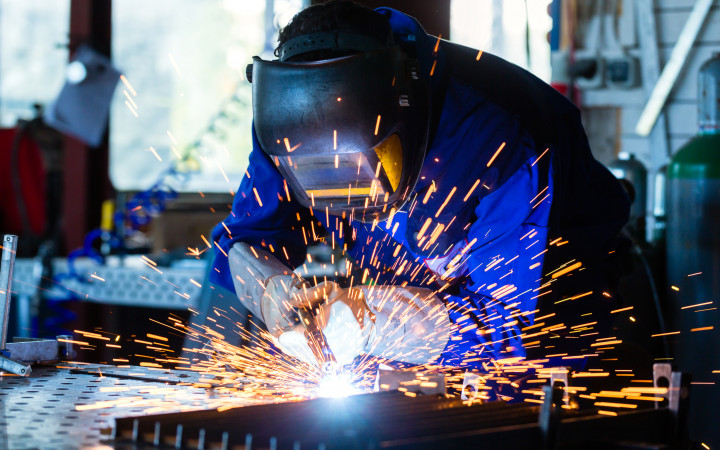Today’s Wonder of the Day was inspired by Jacob. Jacob Wonders, “who invented the welder” Thanks for WONDERing with us, Jacob!
What do telescopes have in common with submarines? How about rocket ships and the Empire State Building? These might sound like tough questions at first glance. But the answer is clear! The steps for building all of these things have something in common: welding!
What is welding? It’s the process of bonding two pieces of metal together by heating them until they melt. Welding is known for the strength with which it combines metals. That’s why it’s used to build things like airplanes and space probes.
Humans have been welding for a very long time. In fact, it goes back thousands of years. Experts say the earliest evidence of welding is from the Bronze Age. Early people used a method called pressure welding. That means they used pressure to heat and join pieces of metal together.
Later, blacksmiths used forges to weld. Modern techniques for welding developed in the 19th century. Since then, many forms of welding have come about. This includes automatic welding, arc welding, and, more recently, friction welding.
Today, welding is a highly sought-after skill. Many people learn to weld as a hobby. But it takes a great deal of practice and training to become a master welder. Part of learning to weld today is becoming aware of the basic safety precautions. Without the right clothing, gloves, and face shields, welding can be dangerous.
How does someone go about becoming a welder? Many people start preparing for a career in welding during high school. They take math and science classes to build a foundation of knowledge. Some also take shop courses or spend part of their day at a career center to get hands-on experience.
After high school, future welders may go to a trade school or college. They’ll earn a certificate or degree. This will help them qualify for an apprenticeship. As an apprentice, they’ll learn from people who have mastered the skill of welding. Eventually, they’ll start their own career as a welder.
Do you enjoy making things? Do you dream of creating medical equipment? How about building homes? Welders have the chance to contribute to many different parts of society. If this sounds like something you’re interested in, maybe it’s the career for you!
Standards: CCRA.L.3, CCRA.L.6, CCRA.R.1, CCRA.R.2, CCRA.R.4, CCRA.R.10, CCRA.SL.1, CCRA.SL.2, CCRA.W.4, CCRA.W.9, CCRA.L.1, CCRA.L.2




